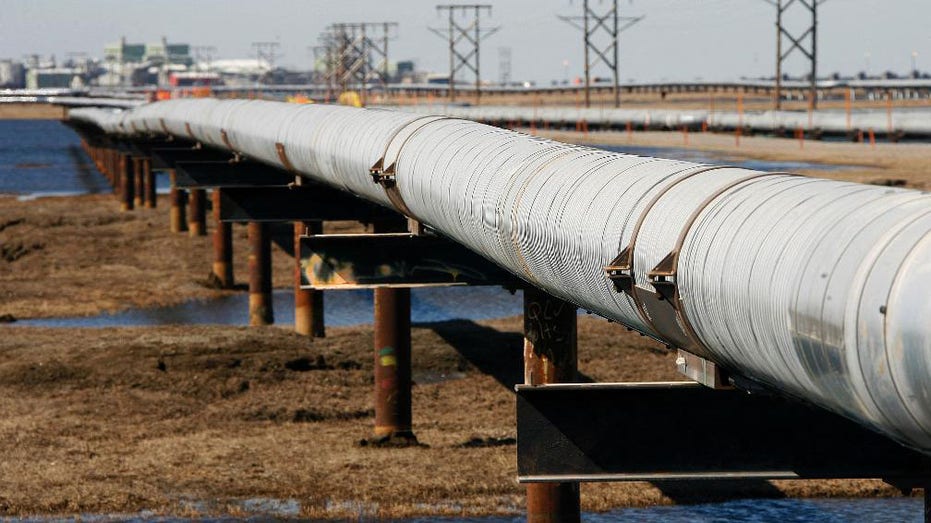Check out what’s clicking on FoxBusiness.com.
The U.S. is seeing its natural gas production decrease as several countries around the world are looking for new energy suppliers due to sanctions imposed on Russia following its invasion of Ukraine.
While the U.S. is the world’s largest producer of natural gas, the two regions of the country most productive of the energy resource — the Appalachians and West Texas — are seeing production growth diminish. Natural gas companies attribute the slowdown to a lack of adequate pipeline infrastructure.

An oil well pump jack is seen at an oil field supply yard near Denver, Colorado, U.S., February 2, 2015. (REUTERS/Rick Wilking/File Photo / Reuters Photos)
EU LEANS TOWARD RUSSIAN OIL BAN BY YEAR’S END, DIPLOMATS SAY

Fuel prices had already begun to surge last fall and following Russia’s invasion of Ukraine on Feb. 24, they have increased even further.
This comes as European nations look to the U.S. for more liquefied natural gas as Europe looks to end its dependence on Russian fuel.
The Appalachian region, which supplied about 37 percent of U.S. gas last year, has seen its production slow due to the difficulties energy firms face in building new pipes to funnel gas out of the Pennsylvania, Ohio and West Virginia area.
Analysts are predicting that the Texas-New Mexico basin will also suffer significant declines next year if energy firms do not begin building new pipelines soon. This Permian Shale basin supplied nearly 20 percent of all U.S. gas in 2021.
In Europe, the largest economies import about 18.3 billion cubic feet per day from Russia while the U.S. can only export about 9.8 billion cubic feet per day as liquefied natural gas.

FILE PHOTO: Gas prices grow along with inflation as this sign at a gas station shows in San Diego, California, U.S. November, 9, 2021. (REUTERS/Mike Blake/File Photo / Reuters Photos)
Appalachia has had steady U.S. gas production gains over the last decade, growing by an average of 36 percent per year from 2010-2019.
Pipeline construction has waned, and output growth dipped to just a four percent average in 2020 and 2021.
EQT Corp said on its earnings call that production growth will not return to its prior pace until there are more pipelines. Analysts at Bank of America estimated that Appalachia would see “little to no production growth” without new pipes.
One project, the Atlantic Coast pipeline, had to be canceled due to the rise in production costs.
The southwest’s Permian Shale is the biggest oil field in the U.S., producing oil that comes out of the ground with a lot of associated gas.
Crude prices are staying at around $100 a barrel and analysts expect energy firms to drill for more oil in the Permian with the associated gas filling existing pipes in 2023.
CLICK HERE TO GET THE FOX NEWS APP
From 2012-2020, Permian gas output saw a growth average of 17 percent per year before it slowed to 8 last year.
Reuters contributed to this report


